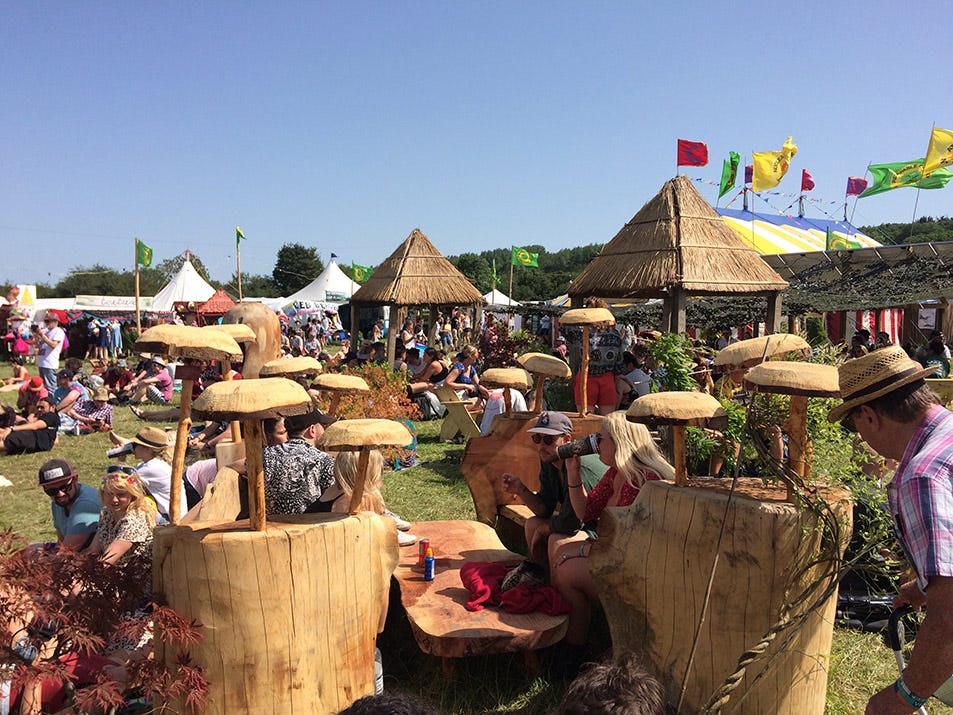Placemaking & the phenomenology of landscape design for events.
How placemaking plays a role in shaping the human experience in nature and what we can learn from it.
Placemaking and phenomenology play a profound role in how we experience landscapes. Beyond aesthetics and function, well-designed landscapes evoke emotions, memories, and a sense of belonging. Placemaking—the process of designing spaces that foster deep connections between people and their environment—goes beyond mere decoration to shape lived experiences. Phenomenology, the study of perception and experience, helps us understand how landscape design influences our relationship with nature through sensory and embodied interactions.
One striking example of placemaking in landscape design occurs at large music festivals, where temporary yet deeply immersive environments are created. In the UK, festivals like Glastonbury transform fields into vibrant, sensory-rich landscapes, illustrating how placemaking enhances the human experience of nature.
The Essence of Placemaking in Landscape Design
Placemaking in landscape design focuses on crafting spaces that feel meaningful, welcoming, and reflective of cultural and ecological narratives. Successful placemaking involves:
Sense of Belonging – Creating spaces that invite engagement and participation.
Cultural Identity – Weaving local heritage and artistic expression into landscapes.
Ecological Integration – Designing spaces that work harmoniously with the natural environment.
Sensory Engagement – Encouraging interaction through textures, sounds, and movement.
Phenomenology & the Sensory Experience of Landscapes
Phenomenology helps us understand how people engage with landscapes through direct sensory perception. Key aspects include:
Visual Framing – How pathways, viewpoints, and structures guide movement and sightlines.
Soundscapes – How acoustic elements (e.g., music, ambient nature sounds) alter spatial perception.
Tactile Interactions – How natural and built surfaces affect our physical experience of place.
Emotional Resonance – How landscapes evoke memory, nostalgia, and identity.
Music festivals, especially those set in natural environments, create multi-sensory landscapes where sound, movement, and interaction redefine space. At Glastonbury, for example, each area—from the Pyramid Stage field to the Green Fields—is designed to offer unique experiential layers, reinforcing the link between phenomenology and placemaking.
Case Study: Placemaking at Music Festivals
Glastonbury Festival: A Temporary City in Nature
Glastonbury, the UK’s most iconic music festival, is a masterclass in placemaking. Held on Worthy Farm in Somerset, the festival temporarily transforms pastoral land into a dynamic, multi-zoned environment that integrates art, culture, and ecology. Key aspects of its landscape design include:
Zoning & Spatial Identity: Each area of Glastonbury has a distinct character. The Green Fields prioritize sustainability and alternative lifestyles, the Arcadia area creates a futuristic, immersive experience, while the Pyramid Stage field remains a vast communal gathering space.
Interactive & Participatory Design: Large-scale art installations, storytelling spaces, and community-built structures invite festival-goers to co-create the environment.
Sustainable Integration with the Landscape: Efforts like tree planting, habitat restoration, and soil protection ensure the festival minimizes environmental impact while enhancing the land’s regenerative potential.
Embodied Experience: The act of walking through the festival’s winding paths, stepping on changing terrains, and moving between immersive environments heightens the phenomenological engagement with the space.
Other UK Festivals & Their Landscape Strategies
Boomtown Festival: Known for its theatrical urban design, it creates an immersive cityscape within natural surroundings, blending built environments with rolling countryside.
Wilderness Festival: Set in Oxfordshire, it integrates woodland, lakes, and open fields, encouraging festival-goers to engage with the landscape through swimming, foraging, and outdoor dining.
The Role of Designers in Shaping Human-Nature Relationships
Music festivals like Glastonbury offer lessons in how landscape architects and urban planners can enhance human-nature interactions. Some key takeaways include:
Designing for Participation: Encouraging people to engage, co-create, and interact with their surroundings fosters deeper connections to place.
Emphasizing Sensory Immersion: Incorporating sound, texture, and movement into spaces enhances experiential depth.
Balancing Intervention with Ecology: Working with, rather than against, natural systems creates landscapes that are both functional and regenerative.
Creating Temporary but Lasting Impact: Even ephemeral spaces can leave lasting emotional and cultural impressions, influencing how people perceive and value landscapes.
The success of festivals like Glastonbury demonstrates that placemaking is not just about permanent structures but about fostering meaningful, sensory-rich, and participatory experiences. As landscape designers, urban planners, and cultural curators look to the future, the lessons learned from these temporary cities can inform more enduring designs in public spaces, urban parks, and natural landscapes.
Ultimately, whether in a festival field or a city park, the power of placemaking lies in its ability to connect people to place, shaping not just the land, but the human experience itself.


